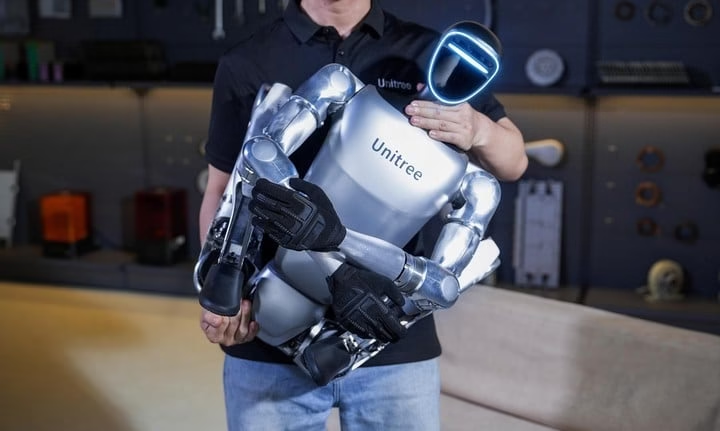2024 may go down as the year humanoid robots took a quantum leap from curious laboratory experiments to living entities with the potential to radically transform our world.
Despite some technical limitations that still exist, advances in artificial intelligence and computing power have overcome many of the obstacles that previously held back the development of humanoid robotics.
Today, these robots are no longer relegated to the realm of science fiction. But are ready to tackle a wide range of tasks in everyday life , from the most strenuous and repetitive tasks in industry to home care.
The growing interest in humanoid robots is demonstrated by the increasing number of companies that are dedicating themselves to their development and commercialization.
This excitement is also fueled by factors such as the shortage of labor in key sectors such as manufacturing and logistics, which is pushing companies to look for alternative solutions to automate processes and increase efficiency.
Furthermore, Nvidia’s announcement of the launch of Jetson Thor, a specialized computing system for humanoid robots , contributes to creating an increasingly solid and complete technological ecosystem, capable of supporting the development of increasingly sophisticated and high-performance machines. China has also shown itself to be far ahead, challenging the US giants with enviable production numbers.
Interest in humanoid robots is constantly growing and the market is expected to grow rapidly. According to research , the global humanoid robot market will grow from $2 billion in 2024 to approximately $13.25 billion in 2029.
What are the realities and models to keep an eye on? Here is an overview of the main companies that are driving innovation in the field of humanoid robotics, and the most advanced models.
ROBOTICS: THE MOST PROMISING COMPANIES AND ROBOTS’

Tesla (USA) : with Optimus, a robot designed to perform general, dangerous, repetitive and boring tasks. Tesla aims to begin small-scale production by 2025.
Agility Robotics (United States) : Digit, a bipedal robot for logistics and warehouses, already used in facilities such as the Spanx warehouse and tested by Amazon.
Figure AI (USA) : Figure 01 and Figure 02, humanoid robots for manual labor, tested in BMW production facilities. The company recently raised $675 million in funding from investors such as OpenAI, Microsoft, Nvidia, and Jeff Bezos.
Hanson Robotics (Hong Kong) : Sophia, Albert Hubo, Bina48, humanoid robots capable of interacting with humans and expressing emotions. Sophia, in particular, has obtained citizenship in Saudi Arabia.
UBTech Robotics (China) : Walker S1, a humanoid robot for manual labor in manufacturing environments, used in BYD Auto factories.
EngineAI (China) : PM01, a humanoid robot with acrobatic capabilities and an ultra-thin waist that can rotate 320 degrees.
1× (Norway): Eve and Neo Beta, humanoid robots for security, healthcare and home use.
Sanctuary AI (Canada) : Phoenix, a general-purpose robot designed to perform a wide range of tasks across multiple industries.
Fourier Intelligence (China) : Humanoid robots for medical rehabilitation, used in over 2,000 facilities in more than 40 countries.
Boston Dynamics (USA) : Atlas, a bipedal search and rescue robot known for its athleticism and agility.
Guangzhou Automobile Group (GAC) (China) : GoMate, a life-size humanoid robot with a variable wheel-foot mobility structure, capable of switching between four-wheel and two-wheel modes.
Apptronik (USA) : Apollo, a humanoid robot designed to transform the industrial workforce, employed in warehouses and manufacturing plants.
Unitree Robotics (China) : G1, a humanoid robot with 23 degrees of freedom, capable of walking, climbing stairs and manipulating objects.
Engineered Arts (UK) : Ameca and Mesmer, lifelike humanoid robots for entertainment, education and research.
Pudu Robotics (China) : Pudu D9, a life-size biped humanoid robot with 42 degrees of freedom and prehensile hands.
China Southern Power Grid (China) : A humanoid robot for power grid maintenance and operations.
AgiBot (China) : A1 and A2-Max, humanoid robots for industry.
Clone Robotics (China) : Alpha, an “android” designed to look even more like humans.
Robot Era (China) : Star 1, a full-figure humanoid robot, along with other half-body and wheeled models.
Rainbow Robotics (South Korea) : Hubo, a humanoid robot developed in collaboration with Samsung.
WorkFar Robotics (USA) : Syntro, a humanoid robot and collaborative robots built without outside help or investment.
Kawada Robotics (Japan) : NextAge, one of the most advanced humanoid robots of a few years ago.
https://youtu.be/L7ou9OOMcNQ?si=fbKA9yS__0LWt9GQ
